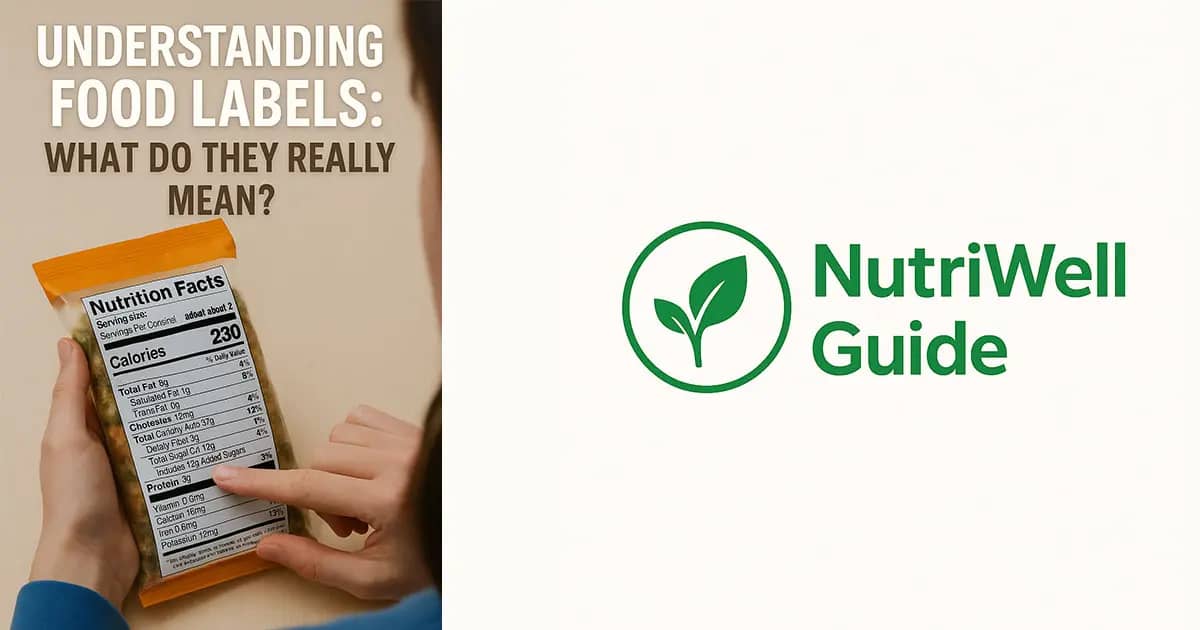When you walk down the grocery aisle, colorful packages scream promises like “low fat,” “high fiber,” or “all-natural.” But have you ever paused and wondered — what do these food labels really mean? Understanding food labels is crucial for making healthier choices, managing weight, and living a more informed lifestyle. In this guide, we’ll break down the mysteries behind those labels and teach you how to read between the lines.
Why Food Labels Matter
Food labels are more than just marketing tools — they are your window into what you’re putting into your body. By understanding them, you can:
- Avoid hidden sugars, unhealthy fats, and additives.
- Compare products to make better nutritional choices.
- Meet specific health goals, such as managing diabetes or high blood pressure.
- Identify allergens that could cause reactions.
In short, food labels empower you to take control of your health.
Decoding the Nutrition Facts Panel: Understanding Food Labels
The Nutrition Facts panel is your first stop. It provides essential information at a glance, but reading it correctly is key.
Serving Size and Servings Per Container
Always start here. The serving size determines all the nutritional information that follows. Often, a package may contain multiple servings, not just one.
👉 Tip: If a small snack bag says 150 calories per serving but contains two servings, eating the whole bag means you consumed 300 calories!
Calories
Calories tell you how much energy you get from one serving. If you’re tracking your intake for weight management, this number is important. However, focus on the quality of the calories, not just the quantity.
For more details on how to read nutrition labels, visit the FDA’s Guide on Food Labels.
Macronutrients: Fats, Carbs, and Proteins
- Fats: Look for lower saturated fats and avoid trans fats altogether. Healthy fats (like those from nuts or olive oil) are good in moderation.
- Carbohydrates: Pay attention to fiber and added sugars. High-fiber, low-sugar options are best.
- Protein: Important for muscle health, satiety, and overall energy.
Micronutrients: Vitamins and Minerals: Understanding Food Labels
Check for essential nutrients like Vitamin D, Calcium, Iron, and Potassium. Many people don’t get enough of these.
% Daily Value (%DV)
This tells you how much a nutrient in one serving contributes to a daily diet, based on a 2,000-calorie intake.
- 5% or less = low
- 20% or more = high
👉 Tip: Aim for higher %DV of fiber, vitamins, and minerals and lower %DV of saturated fats, added sugars, and sodium.
Common Food Label Claims: What They Actually Mean
Marketing language on food packaging can be confusing. Here’s what some popular terms really mean:
- Low Fat: Contains 3 grams of fat or less per serving.
- Reduced Fat: 25% less fat than the original version.
- Sugar-Free: Less than 0.5 grams of sugar per serving.
- No Added Sugar: No sugars added during processing, but it might still have natural sugars.
- High Fiber: At least 5 grams of fiber per serving.
- Organic: Produced without synthetic fertilizers, pesticides, or genetically modified organisms (GMOs).
- Natural: This term is loosely regulated — it usually just means the product doesn’t have artificial colors or flavors, but it can still be highly processed.
👉 Note: Always cross-check these claims with the Nutrition Facts panel and ingredient list!
Ingredient Lists: The Hidden Truth
Ingredients are listed in descending order by weight. That means the first few ingredients make up most of the product.
- Shorter ingredient lists are usually better.
- Watch out for different names of sugar, like high-fructose corn syrup, cane juice, maltose, and dextrose.
- Unpronounceable chemical names could mean highly processed foods.
👉 Pro Tip: If sugar or refined grains are listed in the first three ingredients, think twice before buying!
Red Flags to Watch Out For
While many products look healthy at first glance, certain ingredients should make you cautious:
- Trans fats (even if listed as 0g, it can contain up to 0.5g per serving if “partially hydrogenated oils” are in the ingredients).
- High sodium content (over 20% DV is high — be careful if you have blood pressure concerns).
- Added sugars (choose products with little to no added sugars).
How to Make Smarter Choices
Reading food labels takes a little time, but with practice, you’ll get quicker. Here’s how you can simplify the process:
- Shop the perimeter of the grocery store where fresh foods like fruits, vegetables, dairy, and meats are typically found.
- Choose whole foods whenever possible (e.g., whole grains, real fruits, unprocessed meats).
- Plan meals ahead so you know what to buy and can spend less time decoding labels at the store.
Special Considerations: Dietary Needs
Depending on your personal health goals or restrictions, food labels become even more critical:
- Diabetes: Focus on total carbohydrates and fiber.
- Heart Health: Look for low saturated fat and low sodium.
- Weight Loss: Pay attention to calories, portion sizes, and fiber.
- Allergies: Check for allergen statements and cross-contamination warnings.
Final Thoughts
Food labels are there to inform you, but it’s up to you to read them carefully. By understanding what’s really behind marketing buzzwords and nutrition panels, you take an important step toward healthier eating.
Remember, the more you practice reading labels, the more empowered and confident you become in your food choices. Next time you pick up a “healthy” snack, flip it over and check — you might be surprised!
💡 You Might Also Like:
| 🔑 Keyword | 🔗 Related Article |
|---|---|
| Healthy Smoothie Recipes for Breakfast | 5 Healthy Smoothie Recipes for Breakfast – Read More |
| Homemade Soup Recipes | Homemade Soup Recipes to Warm You Up – Read More |
| Low-Carb Vegetarian Diet Meal Plan | Low-Carb Vegetarian Diet: What to Eat, Avoid and a Sample Meal Plan – Read More |

